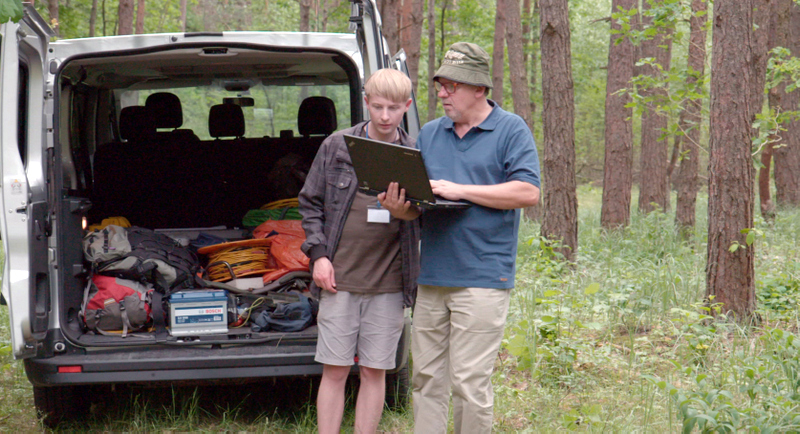.
For the first time since the Holocaust the famous tunnel used by the prisoners of Ponar to escape from the Nazis had been located using new technologies for underground predictive scanning

Photo: Ezra Wolfinger/NOVA
In an exciting new discovery using Electric Resistivity Tomography at the Ponar massacre site near Vilnius in Lithuania, the escape tunnel used by the so called 'Burning Brigade' to allude their captivity and certain deaths at the hands of the Nazis has been pinpointed.
Some 100,00 people, of whom 70,000 were Jews originating in Vilna and the surrounding area, were massacred and through into pits in the Ponar forest near the Lithuanian capital during World War Two. With the retreat of the German forces on the eastern front with the advance of the Red Army, a special unit was formed in 1943 with the task of covering up the tracks of the genocide. In Ponar this task was assigned to a group of 80 prisoners from the Stutthof concentration camp.
At night the prisoners were held in a deep pit, previously used for the execution of Vilna's Jews, while during the day they worked to pen the mass graves, pile up the corpses on logs cut from the forest, cover them with fuel and incinerate them. All the while their legs were shackled and the worked in the full knowledge that on finalizing their horrendous tack, they too would be murdered by their captors. Some of the workers decided to escape by digging a tunnel from the pit that was their prison. For three months they dug a tunnel some 35 meters in length, using only spoons and their hands. On the night of the 15th April, 1944 the escape was made. The prisoners cut their leg shackles with a nail file, and 40 of them crawled through the narrow tunnel. Unfortunately they were quickly discovered by the guards and many were shot. Only 15 managed to cut the fence of the camp and escape into the forest. Twelve reached the partisan forces and survived the war.
Since WWII the exact location of the tunnel has been lost, even though a number of attempts were made to find it. Now, through the cooperative work of Dr. Jon Seligman of the Israel Antiquities Authority; Prof. Richard Freund of the University of Hartford; Paul Bauman of Advisian of Calgary, Canada; and the Vilna Gaon State Jewish Museum, the tunnel has been rediscovered using a geophysical technique used in mineral and oil exploration known as Electrical Resistivity Tomography from the pit used to imprison the captives, to an open space beside it.
Dr. Jon Seligman, Israel Antiquities Authority: "As an Israeli whose family originated in Lithuania, I was reduced to tears on the discovery of the escape tunnel at Ponar. This discovery is a heartwarming witness to the victory of hope over desperation. The exposure of the tunnel enables us to present, not only the horrors of the Holocaust, but also the yearning for life.
Minister of Culture, MK Miri Regev: "I congratulate the Israel Antiquities Authority on its participation in this international effort that turns history to reality. The exciting and important discovery of the prisoners escape tunnel at Ponar is yet more proof negating the lies of the Holocaust deniers. The success of modern technological developments, that have aided the Jewish people to reveal another heroic story the Nazis attempted to hide, profits all humanity.
The award-winning science series NOVA, produced by WGBH for PBS, has exclusive access to follow this excavation and the team, capture their stories, and restore the memory of this lost world in a new film slated to premiere in the US on PBS in 2017. The documentary will tell the story of the fate of the Jews of Vilna, Lithuania, now the modern city of Vilnius, through major archeological excavations of several sites in and around the city, including the larger excavation project at The Great Synagogue of Vilna. The discovery of the evidence of an escape tunnel at the Ponar pits sheds new light on a story of life, resistance and courage.
It is the intention of the partners to return to the site in the near future to expose the tunnel for public viewing as part of the memorial for the victims of Vilna and the surrounding area.
Click here to watch the filmed witness of Mordechai Zeidel, One of the escapiees from the tunnel at ponar (Hebrew)
http://www.yadvashem.org/yv/en/remembrance/2005/zeidel.asp. Credit: www.yadvashem.org
Additional Articles ...